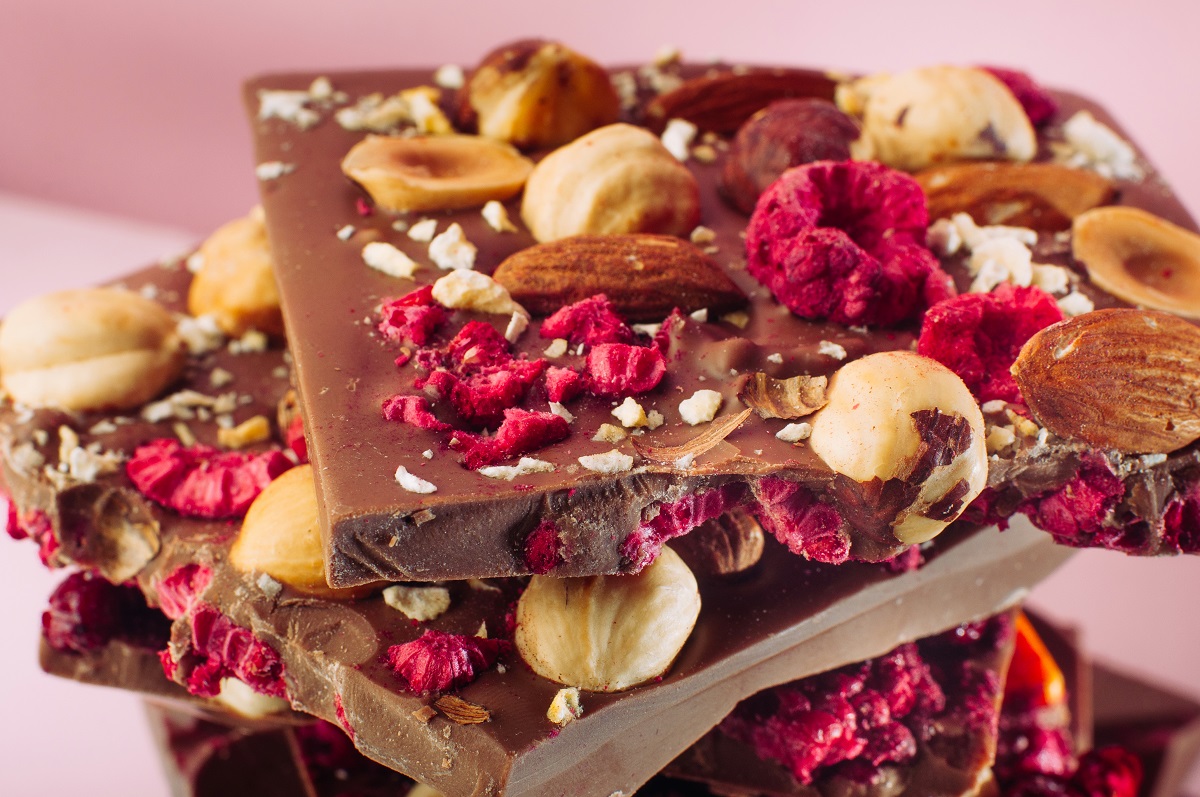Exchange rate fluctuations, speculators, alternative raw materials and climate change – what will our chocolate be made of in the future and how much will it cost? At its summer roundtable, the Association of Hungarian Confectionery Manufacturers analysed the trends disrupting the cocoa market.
While consumers are enjoying their summer holidays, confectionery manufacturers are already preparing for the Christmas season. However, the price of cocoa has soared fourfold since last autumn, so everyone in the industry is now facing the same question, said Sándor Sánta, President of the Association of Hungarian Confectionery Manufacturers. – What price tag will chocolate Santas and Christmas candy have on the shelves?
Although commodity markets are generally characterised by price movements in a trading range, the shock of unexpected changes in fundamentals can trigger unusual price movements, said Gábor Bukta, head of the analysis branch of Concorde Group, in his presentation at the event. This is not the first turbulent period in the cocoa market, with similar volatility already seen in the 1970s, when cocoa prices jumped to around $6,000 per tonne.
However, in a market that is always pricing the future, price movements are influenced not only by expected changes in supply and demand, but also by a number of other factors, including the actions of speculators in the stock market. The latter can even trigger extreme price shifts, but the effect is always temporary. Market participants know well what price increases or decreases are realistic and prices will either recover or find a new equilibrium level after the shock.
This will also be the case in the cocoa market. Although in recent months the price of cocoa has soared from $2-3,000 per tonne to $4,000, $6,000, $8,000 and even $10,000-12,000, and the International Cocoa Organisation expects an 11.6% drop in production this year, analysts who are keeping a close eye on commodity markets, including Bloomberg and J.P. Morgan, expect the price of cocoa to drop to around $6,000 in a year or two.
However, the turbulence in the cocoa market is not affecting the retail price of sweets, Gábor Bukta said. The cost of cocoa adds barely 20% to the retail price of chocolate. In addition, the cocoa content of products varies widely, and manufacturers also use futures to protect themselves against the risk of price fluctuations. The fall in quoted prices included in such contracts also implies a likely cocoa price of around $6,000 by 2025-2026.
Barley, malt, sunflower – cocoa-free chocolate
With only two countries, Ivory Coast and Ghana, accounting for half of the world’s cocoa production, together with Cameroon and Nigeria, this West African region produces more than 60% of the world’s cocoa beans – a geographical concentration that poses serious risks. Monoculture farming leads to deforestation and soil degradation, 50% of cocoa crops are threatened by climate change, while 24,000 litres of water are needed to produce one kilogram of cocoa. Farmers with high carbon footprints and low productivity on cleared land become impoverished, often employing child labourers in hazardous conditions.
That’s why Planet A Foods was the first to develop an alternative to cocoa, said Katrin Förster, the company’s business development manager, who joined the roundtable discussion via video link. The German start-up, founded in 2021, has set its sights on creating sustainable ingredients to help transform the food industry and significantly reduce carbon emissions. The company’s research lab in Munich is the birthplace of ChoViva, which gives you the taste experience of chocolate without cocoa. It is made from locally grown, 100% natural ingredients – oats and/or sunflower seeds – which are fermented and roasted in a very similar way as cocoa beans. Thanks to a short supply chain and an innovative production process, ChoViva’s carbon footprint is up to 90% lower and its water consumption up to 94% less than chocolate production.
Last year, Planet A Foods produced 2,000 tonnes of its product, which is now available in major retail chains, and the innovative ingredient is also attracting interest from big players such as Lindt.
Their aim is not to replace cocoa, says Katrin Förster, but to offer a sustainable alternative that is increasingly expected and appreciated, especially by younger consumers. At the same time, when developing ChoViva, the aim was to create a competitive taste experience, because this is one of the most important prerequisites for market success – and according to the company’s survey, more than 70% of customers are satisfied with the taste, which is already in the indulgent category. If it is available at the same price as products made from cocoa, 95% of respondents would be happy to choose this sustainable alternative. The company is therefore expanding its production capacity in Europe and North America, which will increase production to 10,000 tonnes per year.
Although the exclusive enjoyment value of cocoa, its beneficial physiological effects and the sophistication of the processing technologies make it almost irreplaceable in chocolate production, market players have been looking for alternatives in the past too, pointed out Dr. Ernő Gyimes, Associate Professor at the Institute of Food Engineering at the University of Szeged, in his presentation, which was delivered by Gábor Intődy, Secretary of the Association of Hungarian Confectionery Manufacturers.
During the aforementioned crisis in the late 1970s, for example, Estonians made chocolate with traces of cocoa using kama – a flour mixture of the national cuisine containing rye, wheat, barley and peas. But breweries have also tried to make fake cocoa from barley and malt, and the carob – the fruit of the carob tree – is a well-known chocolate substitute too.
There are three approaches when looking for an alternative to cocoa. Fermenting and roasting cereals, like cocoa beans, is an obvious process. However, three years ago, researchers at the University of Zurich developed a method to grow chocolate from a single cocoa bean under laboratory conditions, producing reproducible cocoa tissue in a bioreactor. Growers, processors and manufacturers are also exploring technologies to use the whole cocoa plant crop – not just the cocoa bean – to make either the raw material or the confectionery.
It is important to stress, and the innovators themselves emphasise this, that the alternatives are not intended to replace cocoa, but to add a new flavour to the palette. We must first and foremost strive to protect and preserve our environment so that future generations can live in a world where the cocoa bush grows and the unique and irreplaceable chocolate made from cocoa remains enjoyable and accessible.
Christmas candy with a delayed price effect
It has been our experience for decades that the demand for chocolate is persistent, accounting for a third of confectionery sales, and this will certainly continue to be the case, said István Takács, managing director of Szerencsi Bonbon, who predicted that the price of the top Christmas candy, szaloncukor, will rise by around 10% by the end of the year. However, higher cocoa content products will become more expensive to produce and may therefore sell less once the delayed effect of the cocoa price explosion reaches the shelves. Meanwhile, manufacturers have to develop new products, but innovation is more difficult under these circumstances.
Dr. Róbert Török, director and chief museologist of the Hungarian Museum of Trade and Hospitality, also spoke about innovations and crises, and gave an overview of the history of chocolate consumption in Hungary dating back to the 18th century.
What cocoa is to the confectionery industry, cellulose is to packaging, which is also in short supply – said Péter Rosta, Professor of Industrial Design at the Faculty of Wood Engineering and Creative Industries at the University of Sopron. In the field of packaging, the task is not only to create designs that respond to modern needs – for which the university’s students have received prestigious national and international awards – but also to develop sustainable solutions.

